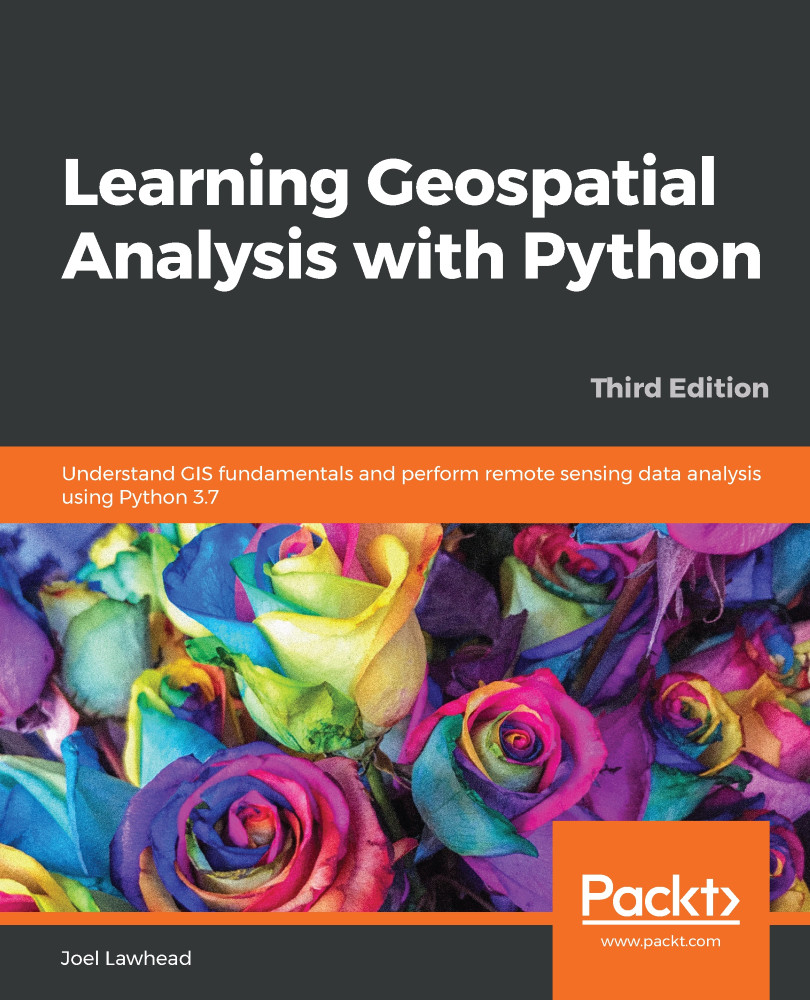JavaScript Object Notation (JSON) is rapidly becoming the number one data exchange format across a lot of fields. The lightweight syntax and its similarity to existing data structures in both the JavaScript that Python borrows some data structures from, as well as JavaScript itself, make it a perfect match for Python.
The following GeoJSON sample document contains a single point:
{
"type": "Feature",
"id": "OpenLayers.Feature.Vector_314",
"properties": {},
"geometry": {
"type": "Point",
"coordinates": [
97.03125,
39.7265625
]
},
"crs": {
"type": "name",
"properties": {
"name": "urn:ogc:def:crs:OGC:1.3:CRS84"
}
}
}...


